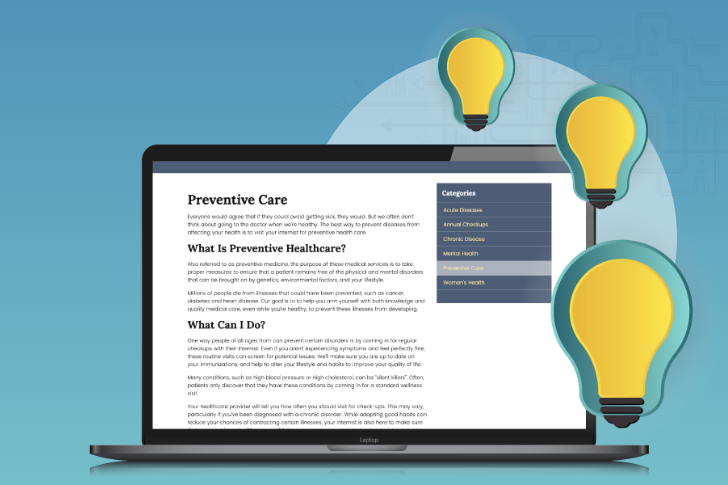5 Ways Online Patient Education Makes your Practice Better
Thanks to smartphones, 77% of American adults have the answer to almost any question in their pockets. Tech-savvy practices take advantage of this by putting patient education materials directly on their websites. But accessibility isn’t the only benefit. Online patient education has a few perks that you might not expect.
- It can raise your Google ranking.
Putting your patient education materials online generates more content for your website, which in turn creates new opportunities for search optimization. With a greater supply of properly curated content, search engines are more likely to direct patients searching for podiatry health information to your practice website.
- It caters to more learning styles.
Graduating from the world of paper education materials opens the door to a wide variety of content delivery methods. The best examples include high definition videos, illustrations, and anatomically correct diagrams. Patients can watch, look, or read according to their preference.
- Space is virtually unlimited.
Online materials don’t take up physical space, which means you can provide as much information as you want. You probably can’t fit a display of 1,000 different pamphlets in your practice, but you can do exactly that online.
- It’s easier to update than print.
New developments in your field require updates to your patient education materials. When they’re online, it’s often as easy as changing some text in your website editor. That means you can stay on the cutting edge of podiatry, giving your patients the up-to-date information they deserve. Printed materials need to be re-ordered, old ones recycled, etc.
- It makes your website more engaging.
This is perhaps online education’s greatest strength. When a new patient visits your website and finds answers to their questions, they’re more likely to schedule an appointment with you than with another practice. It proves to them that you are knowledgeable on the subject. Once they decide they need to see a doctor, your contact information will be very close by.
All in all, online patient education is one of the best ways to cater to the modern patient. Use it alongside printed materials in order to get the best results – both for your patients and your practice.



